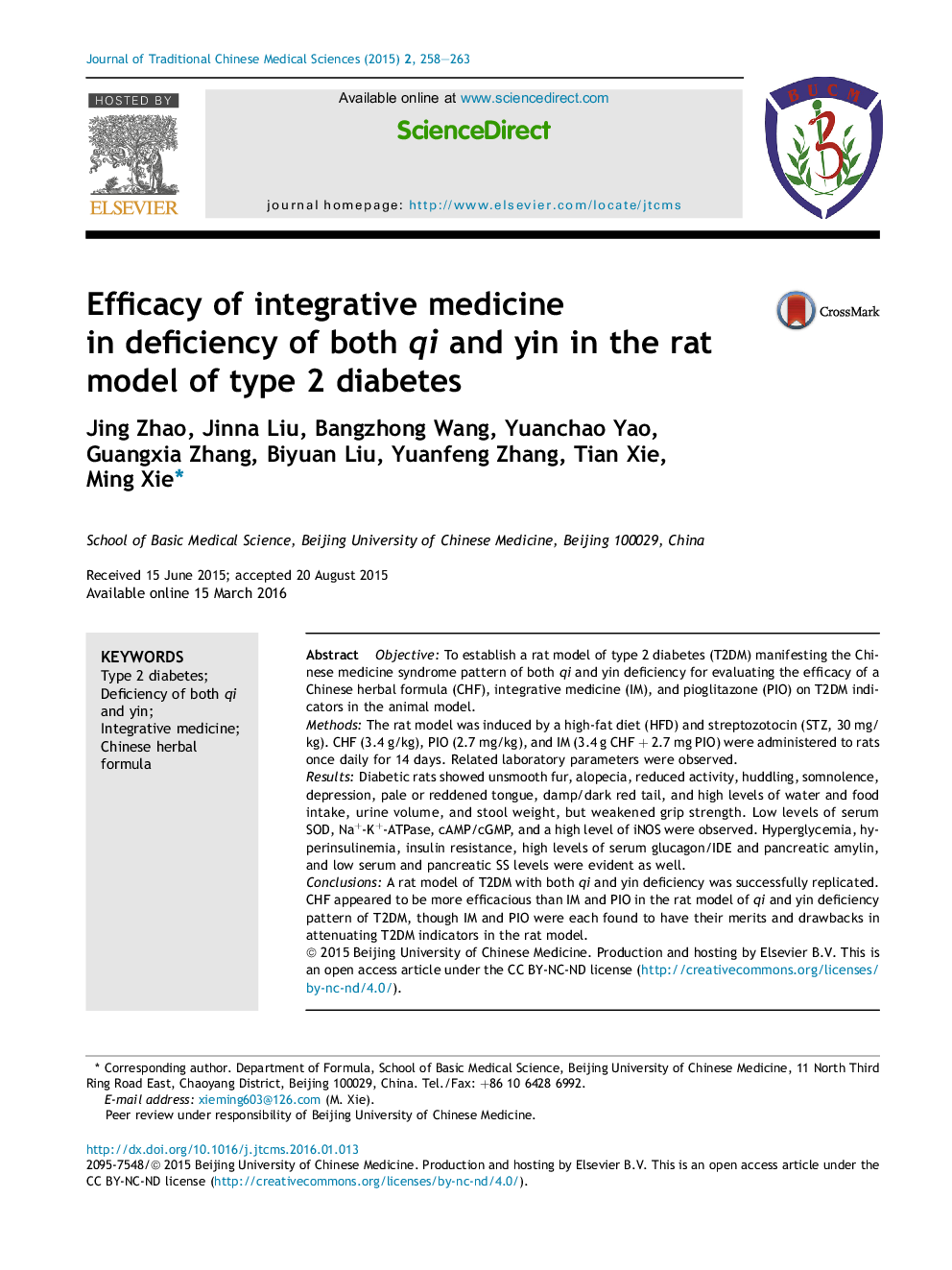| Article ID | Journal | Published Year | Pages | File Type |
|---|---|---|---|---|
| 1993143 | Journal of Traditional Chinese Medical Sciences | 2015 | 6 Pages |
ObjectiveTo establish a rat model of type 2 diabetes (T2DM) manifesting the Chinese medicine syndrome pattern of both qi and yin deficiency for evaluating the efficacy of a Chinese herbal formula (CHF), integrative medicine (IM), and pioglitazone (PIO) on T2DM indicators in the animal model.MethodsThe rat model was induced by a high-fat diet (HFD) and streptozotocin (STZ, 30 mg/kg). CHF (3.4 g/kg), PIO (2.7 mg/kg), and IM (3.4 g CHF + 2.7 mg PIO) were administered to rats once daily for 14 days. Related laboratory parameters were observed.ResultsDiabetic rats showed unsmooth fur, alopecia, reduced activity, huddling, somnolence, depression, pale or reddened tongue, damp/dark red tail, and high levels of water and food intake, urine volume, and stool weight, but weakened grip strength. Low levels of serum SOD, Na+-K+-ATPase, cAMP/cGMP, and a high level of iNOS were observed. Hyperglycemia, hyperinsulinemia, insulin resistance, high levels of serum glucagon/IDE and pancreatic amylin, and low serum and pancreatic SS levels were evident as well.ConclusionsA rat model of T2DM with both qi and yin deficiency was successfully replicated. CHF appeared to be more efficacious than IM and PIO in the rat model of qi and yin deficiency pattern of T2DM, though IM and PIO were each found to have their merits and drawbacks in attenuating T2DM indicators in the rat model.
